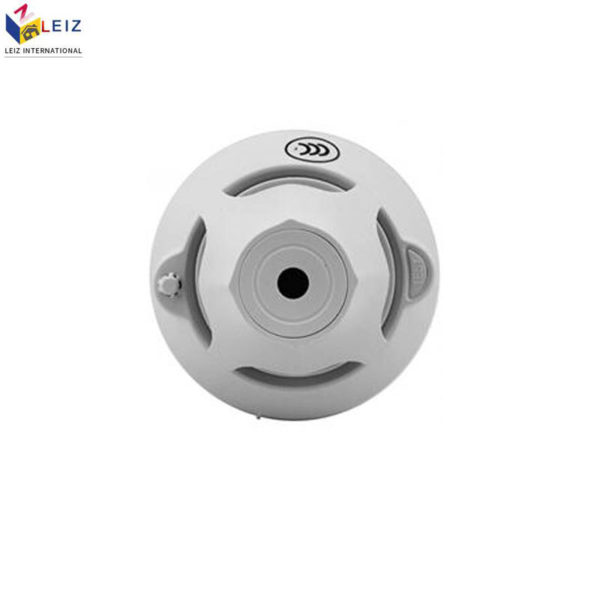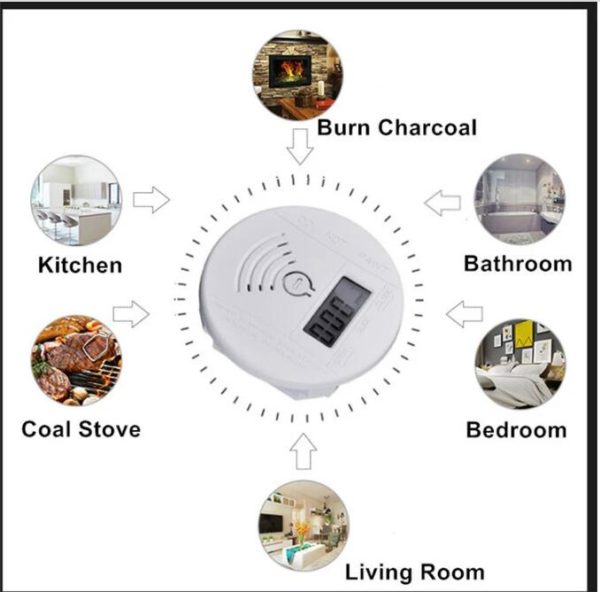How do I choose the right smoke alarms? Previously, smoke alarms were not much of a priority in this country, with less than 5% of homes having a smoke alarm compared to around 95% in the USA, which is a considerable risk to home safety. As we surf the internet every day, we may often read news about fires and fire hazards that threaten people’s safety. If a smoke alarm had been installed on some premises, a lot of tragedy might have been avoided.
Smoke alarms, also known as fire smoke alarms, smoke sensors, smoke sensors, etc., are designed to prevent fires by monitoring smoke concentration. Generally, stand-alone, physical product battery-powered or AC-powered battery-powered backup, ready-made alarms that give an audible and visual indication are called stand-alone smoke alarms. This is called a stand-alone smoke alarm. Powered by a bus, there can be more than one connected to the bus, and the fire alarm controller is networked and communicates to form an alarm system, with no sound at the alarm scene and sound and light indication from the host. Smoke detectors are divided into those with address code and those without address code.
Stand-alone smoke detecting and fire alarm devices use photoelectric smoke sensing or ion smoke sensing technology, which can send out alarms directly after detecting a fire at an early stage, reminding the site personnel to quickly call the police to evacuate in time.
Classification of smoke detector
A smoke alarm, according to different ways of transmitting information from the detector to the host, can be divided into wired and wireless two kinds of wired mostly networked, requiring an external power supply, but can be linked with other systems, such as water spray, alarm, etc., once an accident can be immediately linked processing, mostly used in superstores, office buildings and other places.
The wireless ones are stand-alone and mainly use batteries. Compared to the wired ones, they are more convenient to install and do not require an additional power socket, but the batteries need to be replaced regularly. Some smart smoke alarms are now available with an additional WIFI module so that even freestanding models can be linked to other alarm products in the same network environment. From an installation point of view, most stand-alone types are direct paste type, which can be directly pasted on the ceiling by glue.
Smoke alarms can be divided from the sensors used into
Ion smoke alarms have an ionization chamber; the ionization chamber uses a radioactive element one saw 241 (Am241), the intensity of about 0.8 micro Curie, the normal state in the electric field in a state of equilibrium, when the soot into the ionization chamber will disrupt this equilibrium, the alarm circuit detects the concentration of more than a set threshold alarm.
It is the presence of a small amount of radioactive material within the ionization chamber that makes the air within the room a conductor, allowing a constant current to pass through the air between the two electrodes, the rays ionizing the local atmosphere and the ion current to be formed by the voltage action, which gives the ionization chamber an effective electrical conductivity. When the smoke particles enter the ionization zone, they reduce the air’s electrical conductivity due to their association with ions, resulting in a reduction in ion mobility. When the conductivity falls below a predetermined value, the detector sounds an alarm.

When the smoke enters the optical labyrinth, it is refracted and reflected, and the receiving tube receives the infrared light. The intelligent alarm circuit judges whether the threshold value has been exceeded and issues an alarm if it has. Depending on how light is absorbed and scattered by smoke particles, the photoelectric smoke detectors are divided into shading and diffuse types. Photoelectric smoke detectors are divided into a blackout and diffusive types.
VESDA stands for “Very Early Smoke Detection Device,” a name based on the function of the product. Depending on their principal characteristics, they are also referred to as aspirated or pick-up style smoke detectors. VESDA – instead of waiting for the smoke to drift to the sensor, VESDA actively samples and detects the air so that the air sample in the protected area is sucked into the sampling pipe by the suction pump inside VESDA and sent to the detector for analysis. Four lines into the VESDA pass through filters, suction pumps feed the laser detection chamber, and detection signals are sent to the control display unit. There is also sub-filtered air to keep the optical components in the laser cavity clean during this time.
Smoke alarms can be divided according to function into
Civilian fire smoke alarms are used in residential homes and are generally installed in kitchens. When the smoke from a fire is encountered, the alarm can be audible or visual, accompanied by a digital display, and linked to external equipment. Some warnings ding white to switch on the exhaust fan and vent the smoke outside.
Industrial smoke alarms and noxious smoke alarms differ only in their detection probes but are very similar in principle and application. Industrial smoke alarms and noxious smoke alarms can also be divided into leak detectors, controllers, and detectors, depending on the detection environment. Leak detectors are small in size, can be carried around or held, and are mainly used for leak detection and inspection in gas management. If there is a smoke leak, the Leak Detector will give an audible and visual alarm, as well as a digital display of the smoke concentration, so that safety measures can be taken in time to prevent nasty accidents such as explosions. The controller can be used in combination with a detector to monitor the concentration of smoke in an explosion-proof site permanently. The detector is installed in the explosion-proof place, and the controller is wall-mounted in an operated area such as a duty room, connected by a shielded cable. When the detector in the field detects a leak, it sends a signal through the shielded cable to the controller, which gives an audible and visual alarm and simultaneously starts the exhaust device or closes the solenoid valve to cut off the power supply to ensure safety. These instruments are widely used in industrial locations such as liquefaction stations, car petrol stations, and boiler rooms.

Smoke alarms can be widely used in residential buildings, “three-in-one” places, facilities for the elderly, the disabled and children, the homes of “empty nesters,” destitute elderly people, community residents, old residential buildings, dormitories, rented houses, and other places where people have died—fire-prone premises. Smoke alarms should be installed in areas of public activity in the buildings as mentioned above and premises, bedrooms and other restrooms in residential buildings living and drawing rooms, kitchens, dining rooms, internal corridors, the upper part of the evacuation stairs on each floor, and other rooms and parts of the building where there is a risk of fire.
Releated posts about Smoke detector








